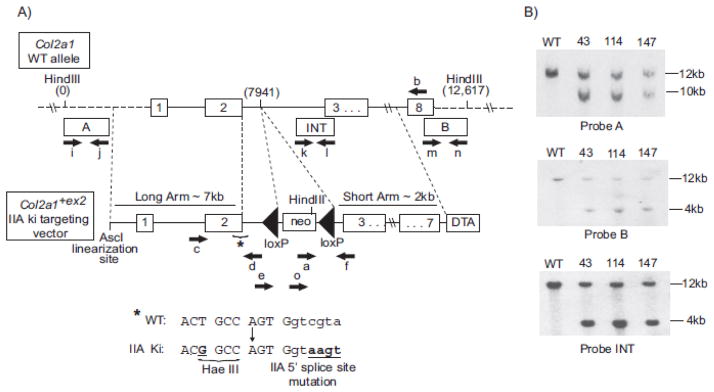Fig. 2.
Knock-in targeting strategy and confirmation of homologous recombination in ES cells. Panel (A) shows a region of the wild type (WT) Col2a1 allele and the targeting vector to generate the Col2a1+ex2 knock-in (ki) allele. Location of all primers used to detect homologous recombination and presence of specific point mutations are shown by black arrows (primers a, b, c, d, e, f, and o). Primers i+j, k+l and m+n were used to amplify probes A, INT or B, respectively for use in Southern blotting. Sequences of all primers are shown in Table S1 (including primers g and h which were used to test for the presence of Cre). Asterisk (*) shows the region and the sequence of the Col2a1 allele containing the point mutation to create a HaeIII restriction site and the point mutations to create the consensus 5′ splice site sequence in intron 2. Bold, underlined nucleotides denote these point mutations. Uppercase letters represent exon sequence and lowercase letters represents intron sequence. Panel (B) shows radiolabeled Southern blots of HindIII digested genomic DNA from homologous recombinant ES clones 43, 114, and 147 and wild-type (WT) control. Southern blot probes A and B confirm homologous recombination within the long and short arms, respectively and probe INT confirms single integration. Expected DNA band sizes are: WT = 12.6 kb with probes A, B, and INT; IIA knock-in mutant = 9.8 kb with probe A and 4.2 kb with probes B and INT.

